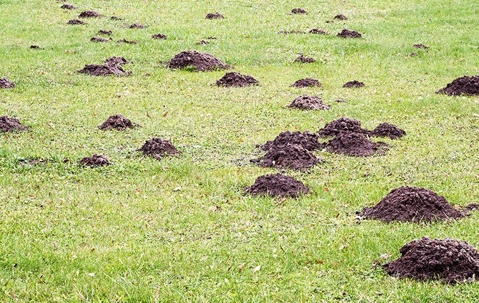If you're like most homeowners, you do everything you can to keep your lawn looking great. But no matter how well you mow, fertilize, and care for your lawn, there's always a chance it will fall victim to a mole infestation.
With help from your trusted experts for mole control in Memphis, you'll be able to deal with the problem so you can get your lawn back to being the envy of your neighbors. But before you make the call, you should understand what draws these pests to your yard.
Grub Worms: A Mole's Favorite Snack
Moles are carnivores, and their favorite food, by far, is the grub. These small worms feed on the roots of your lawn and can be enough to damage your grass and leave your yard looking patchy and yellow even during the peak of the growing season.
But since moles happily burrow beneath your sod in search of what they consider a delectable treat, the damage can only get worse. That's why it's important to stay on top of your mole and grub control efforts year after year. If you can prevent grubs from infesting your soil, you may discourage moles from feeding on your property.
Identifying Mole And Grub Damage: Signs Of A Problem
Professional mole control appointments are the best way to prevent damage to your lawn, but you still need to know when to call and schedule an appointment. That means you need to know the early warning signs of an infestation so you can act quickly. Here are a few telltale signs to watch for:
- Moles grow between four and ten inches long and are usually brownish-gray in color with large, spade-like paws for digging and pointed noses for sniffing out insects. If you see moles on your property, you have an active mole problem.
- Moles burrow beneath the ground in search of insects and food. If you see mounds of loose dirt sitting on top of your grass, you likely have moles on your property.
- As moles dig beneath the ground, they displace the dirt and cause raised tunnels or ridges to form in the soil and around your grass.
- Grubs feed on the roots of your grass, which can damage the lawn and cause yellowing or premature death to the impacted parts of your turf. If you notice discoloration or have dead patches of grass, you may have a grub problem in your yard, which puts you at increased risk of a mole infestation.
If you notice any of these signs, it's best to start working on your lawn mole control efforts around your home.
Prevention Is Key: Building A Resilient Yard Against Moles And Grubs
When it comes to controlling moles, the best thing you can do is find ways to prevent them from infesting your yard in the first place. Here are a few easy tips to help:
- Stay on top of routine lawn pest control treatments to reduce the number of grubs in your yard.
- Contact a professional pest control service for help if you see any early warning signs of moles in your yard.
- Improve the drainage around your yard to reduce excess moisture levels so your lawn is less attractive to moles.
Keep in mind that preventing moles is incredibly difficult. Your best bet is to schedule a professional treatment and removal appointment if you notice any signs of a mole problem.
Professional Mole And Grub Control Services: When To Seek Help
If you think you have a mole problem in your yard, don't ignore it. Schedule an appointment with your local mole control specialist as soon as you notice the problem. The sooner you do, the easier it will be to mitigate the damage to your lawn.
Think you have moles on your property? Contact KEMCO Pest & Lawn today to schedule an appointment.

